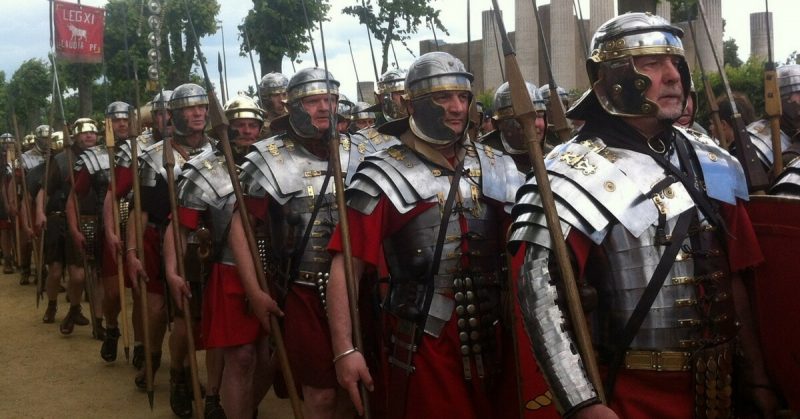The Roman army was the closest the ancient world had to a modern army, with disciplined troops uniformly organized and equipped. As in a modern army, their fighting equipment was important, but so were many things that weren’t directly about battle.
Gladius
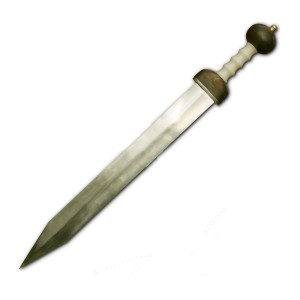
The principle weapon of the Roman legionary was a sword called the gladius. Its blade was 400-550mm (16-22 inches) long, short enough to be easily drawn on the right-hand side of the body, avoiding entanglement with shields. The early Mainz-pattern gladius was well-balanced, with a long point that made it ideal for stabbing through armor while also being an effective slashing weapon. It was replaced during the 1st century AD by the Pompeii-pattern gladius, which was even better balanced and more standardized in length.
Pilum
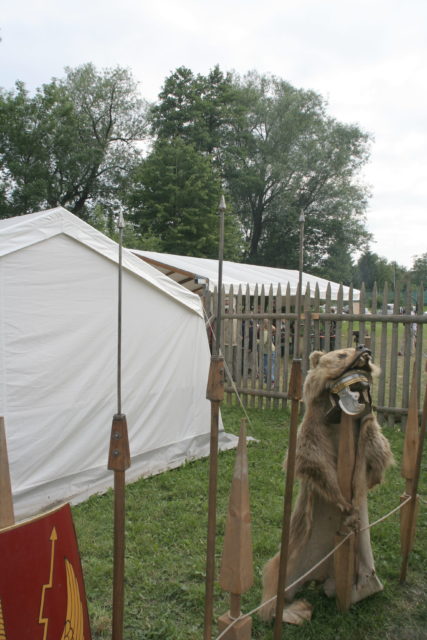
It used to be widely believed that legionaries carried two javelins into battle. This was probably a misconception, based on a small amount of evidence, and in reality they usually carried a single throwing spear – the pilum.
Designs of these spears varied, with some having an extra weight behind the head to add extra penetrating power. They were intended to punch through shields and armor, killing or wounding enemies. Their effective range was around 15m (50ft), making them most effective when troops had the discipline to wait for enemies to get close before throwing.
Helmet
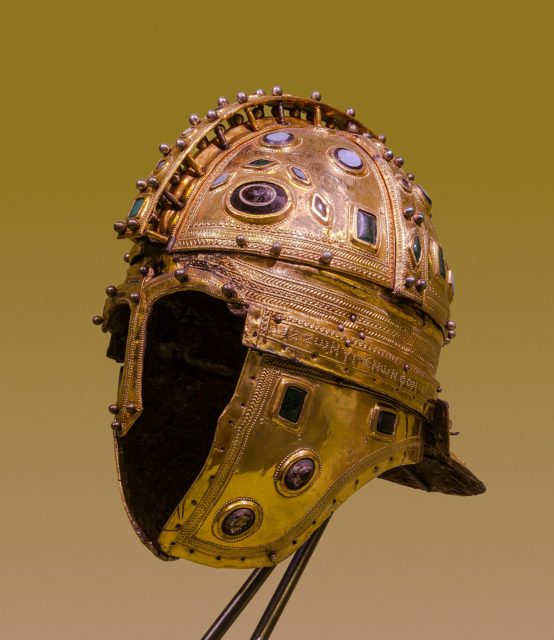
Roman helmets changed over the centuries and from one region to another but certain elements remained constant during the height of the empire. Broad cheek guards protected the face. A plate extending from the back protected the neck and was lowered and extended over time to improve this function. Ridges and bars on the forehead and the top of the helmet made it more solid against blows coming against the top of the head, the area most vulnerable to attack on troops carrying large shields.
Crests on helmets were often worn in battle under the late republic. They were worn less often during the principate that followed, but helmets were still given crest fittings, so they could be made more impressive during parades.
Body Armor
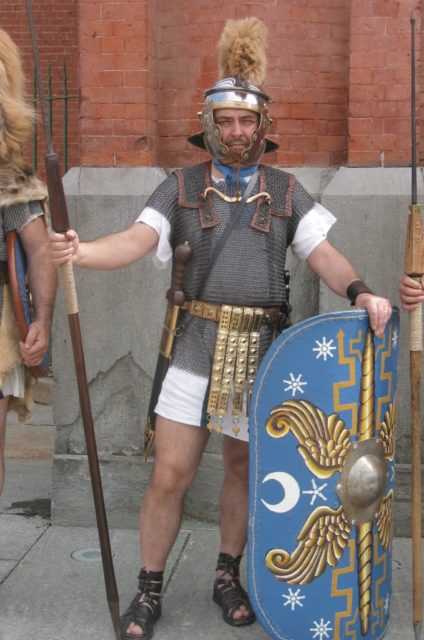
The form of armor most commonly associated with the Romans is the lorica segmentata – a form of segmented armor in which overlapping plates provide a compromise between flexibility and protection. Despite its iconic status, archaeological evidence only shows this armor in use from the 1st to the 3rd century AD.
Chainmail, on the other hand, was used throughout the history of the Roman army. Usually made of iron rings between 1mm and 7mm thick, it provided reasonable protection but was vulnerable to swift thrusts and short range arrows.
Some soldiers instead wore scale mail, rows of overlapping metal scales sewn onto cloth.
Shield
The legionary’s shield changed little from the Marian standardizing reforms to the period of decline during the late empire. A tall shield that could protect most of the body, it was semi-cylindrical in shape and had straight sides. Made of layers of wooden strips glued together, it often had metal bindings, and usually a metal boss at the center, behind which was the horizontal grip.
Boots
An army may march on its stomach but it marches with its feet, making solid footwear vital. Despite its sandal-like appearance, the Roman military boot, or caliga, was a sturdy example, consisting of a sole, insole and upper, with straps that could be tightened to make it a close fit. Socks worn under the boot helped to keep the feet warm. From the late 2nd century AD, more enclosed uppers became more popular.
All military boots had metal studs on the bottom. In most circumstances, these gave them a better grip. The exception was shown when the centurion Julianus was chasing enemies in Jerusalem in 70 AD, skidded on flagstones, fell, became surrounded and was killed. But the studs remained mostly advantageous and were often replaced after wearing out through long marches.
Cloak
Ordinary legionaries wore one of two types of cloaks to keep them warm and dry. The sagum was a heavy rectangle of wool, its sides held together with a brooch on the right shoulder, leaving the right arm free. The paenula was oval in shape, with a hole for the head and sometimes a hood. The front fastened with toggles or buttons.
Tunic
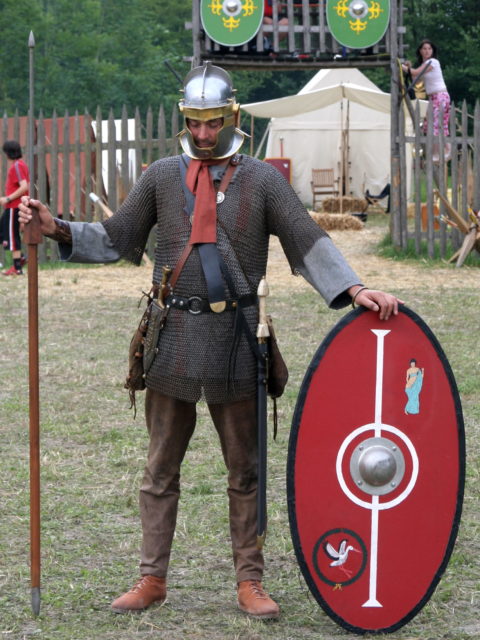
The tunic was the standard male item of clothing of Rome. When army equipment became standardized, matching tunics replaced the mismatched civilian ones men had previously worn.
These tunics were mostly fairly ordinary – two squares of wool or linen sewn together at the sides and shoulders, usually without sleeves. Their main difference from civilian tunics was that they were longer, though often worn hitched up above the knees to give the legs more freedom, meaning that the extra length did not show.
Belt
To hitch up the extra length of the tunic, soldiers had to wear belts. Belting a tunic, therefore, became an important symbol of a man’s military status, and soldiers would wear their tunics belted even when not wearing the rest of their military garb. Augustus punished centurions by making them stand unbelted and ashamed outside his tent.
Belts also served important practical functions. They carried swords, daggers, and other equipment. They spread the weight of chainmail and scale mail armor so that it was not all carried on the shoulders, making it far more comfortable and allowing soldiers to wear it for long periods of time.
Construction Tools
The construction of marching camps, siege works, and even civilian infrastructure was an important part of a legionary’s work. They carried a wide range of construction tools.
The contemporary historian Josephus’s long list of tools carried by every Roman legionary was certainly an exaggeration. It would have been unnecessary and impractical to give every man a saw, basket, pick, ax, strap, chain, and bill-hook. More likely, this represents the equipment carried by a group of soldiers, with each man carrying some part of the toolkit. Specialist tools such as the surveyor’s groma were less common but still important.
Source:
Adrian Goldsworthy (2003), The Complete Roman Army.
